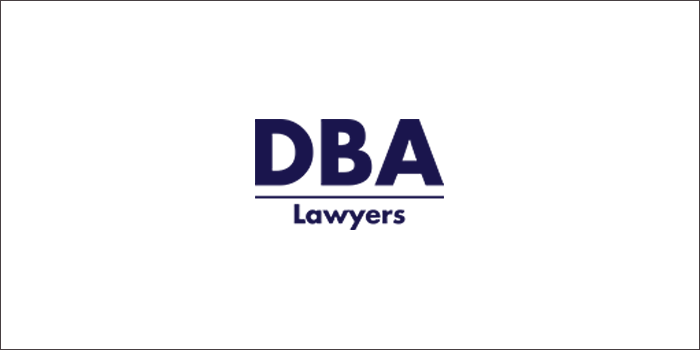
By Joseph Cheung ([email protected]), Lawyer and David Oon ([email protected]), Senior Associate, DBA Lawyers
A reg 13.22C non-geared unit trust (‘NGUT’) is not included as an in-house asset (‘IHA’) at the time of the initial investment provided certain criteria is met. Some trustees may think that they are investing in a reg 13.22C NGUT on the basis that the unit trust does not have outstanding borrowings. However, there are other criteria that must be satisfied in order for the NGUT to be properly categorised as a reg 13.22C NGUT. This article explores some of the criteria required for an investment to be a reg 13.22C NGUT and the events that can occur to cause the investment to no longer be a reg 13.22C NGUT. These events will typically lead to the investment becoming an in-house asset where the trust is controlled or majority controlled by related parties.
Reasons to use an NGUT
NGUTs are a legitimate exemption to the IHA definition. An NGUT allows for one or many related investors to come together to invest in property. An NGUT provides flexibility in ownership as the SMSF can acquire further units in the unit trust from a related party without infringing s 66 of the Superannuation Industry (Supervision) Act 1993 (Cth) (‘SISA’). There may also be stamp duty savings in the transfer of units if the value of the property owned by the unit trust is below the landholder threshold of the relevant state or territory.
IHA compliance and the appeal of a reg 13.22C NGUT
It is a superannuation law requirement that the trustee of an SMSF must take all reasonable steps to ensure that the in-house asset (‘IHA’) rules are complied with (s 84(1) of the SISA).
Subject to some exceptions, an IHA of a superannuation fund is an asset of the fund that is:
- a loan to, or an investment in, a related party of the fund;
- an investment in a related trust of the fund, or
- an asset of the fund subject to a lease or lease arrangement between a trustee of the fund and a related party of the fund.
An NGUT must satisfy the criteria in reg 13.22C of the Superannuation Industry (Supervision) Regulations 1994 (Cth) (‘SISR’) in order to qualify for the IHA exemption. It must also then not trigger any event in reg 13.22D, or else it will fall back to being an in‑house asset.
Reg 13.22C initial criteria
The below checklist provides a high-level simplification of the criteria for the unit trust to not be an in‑house asset:
- The superannuation fund has fewer than 5 members.
- The trustee of the unit trust does not have a lease with a related party of the superannuation fund. An exception applies if the lease relates to business real property.
- The trustee of the unit trust does not have outstanding borrowings.
- The assets of the unit trust do not include:
- An interest in another entity; or
- A loan to another entity except a deposit with an authorized deposit-taking institution (eg, certain approved banks); or
- An asset that is subject to a charge (including a mortgage); or
- An asset (excluding money) that was ever owned by a related party, subject to certain excluded timeframes. An exception also applies if the asset was business real property acquired at market value.
Please note that the above is a simplification and in reality, the full criteria in the law must be satisfied in order for the NGUT to be properly categorised as a reg 13.22C NGUT (at the time of the initial investment).
SISR reg 13.22D trigger events
Meeting the criteria to be a reg 13.22C unit trust at the time of the initial investment does not guarantee that the asset will never be an IHA.
Regulation 13.22D of the SISR is perhaps less discussed, but is equally as important as reg 13.22C. Regulation 13.22D specifies a list of triggering events that would cause reg 13.22C to cease to apply to the NGUT. These triggering events are traps for many trustees.
Some common traps within this area that lead to the units being an in-house asset include:
- The trustee of the unit trust acquires any interest in another entity, even (for example) listed securities.
- The trustee of unit trust makes a loan to another entity other than a deposit with an authorised deposit-taking institution. This means a deposit with any non-approved institution will trigger reg 13.22D.
- The trustee of the unit trust borrows money.
- A charge or mortgage is given over an asset of the unit trust.
- The trustee of the unit trust conducts a business. There is no exception for conducting a business of property development, so people doing any developments with real estate must be extremely careful.
- The trustee of the unit trust leases one of its assets to a related party, unless the asset is business real property. A triggering event may also occur if the property loses its status as business real property.
- The trustee of the unit trust conducts any transaction otherwise than on an arm’s length basis. This trap is triggered regardless of whether the transaction favours the unit trust or the other party. In this sense, it is more restrictive than the requirement under s 109 of the SISA. This requirement is not hinted at in the initial reg 13.22C list.
- The trustee of the unit trust acquires an asset (excluding money) that was at any point owned by a related party, subject to certain excluded timeframes. An exception applies if the asset was business real property acquired at market value.
Where any triggering event has occurred and no exception exists, the NGUT will cease to be a reg 13.22C NGUT. For more detail about the triggering events, please refer to reg 13.22D of the SISR.
Consequences of triggering an event under reg 13.22D
Where a trigger event under SISR reg 13.22D occurs, reg 13.22C will cease to apply to an asset of a fund. Furthermore, neither regs 13.22B nor 13.22C will apply to any other asset of the fund that is: (a) acquired by the fund at any time; and (b) an interest in the unit trust. This means a trigger event in reg 13.22D will taint the unit trust forever for that superannuation fund.
As a result of reg 13.22C ceasing to apply, an investment will likely become an IHA. If it becomes an IHA, it will be subject to the IHA rules. For example, the investment in units will be included in a calculation of the market value ratio of the fund’s IHAs which broadly must not exceed 5%.
Conclusion
A trustee of an SMSF who maintains a NGUT investment should check that all the criteria in reg 13.22C are satisfied prior to making the initial investment. Care should also be taken to ensure that no events under reg 13.22D occur. Where there is doubt or uncertainty as to the application of the relevant law, it is recommended that expert legal advice be obtained.
* * *
This article is for general information only and should not be relied upon without first seeking advice from an appropriately qualified professional. The above does not constitute financial product advice. Financial product advice can only be obtained from a licenced financial adviser under the Corporations Act 2000 (Cth).
Note: DBA Lawyers hold SMSF CPD training at venues all around. For more details or to register, visit www.dbanetwork.com.au or call 03 9092 9400.
For more information regarding how DBA Lawyers can assist in your SMSF practice, visit www.dbalawyers.com.au.

